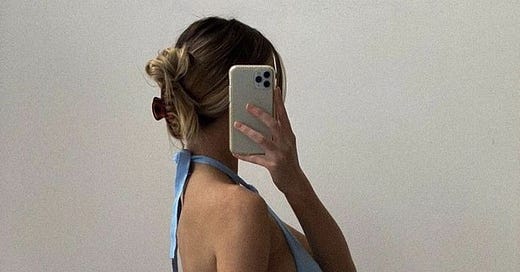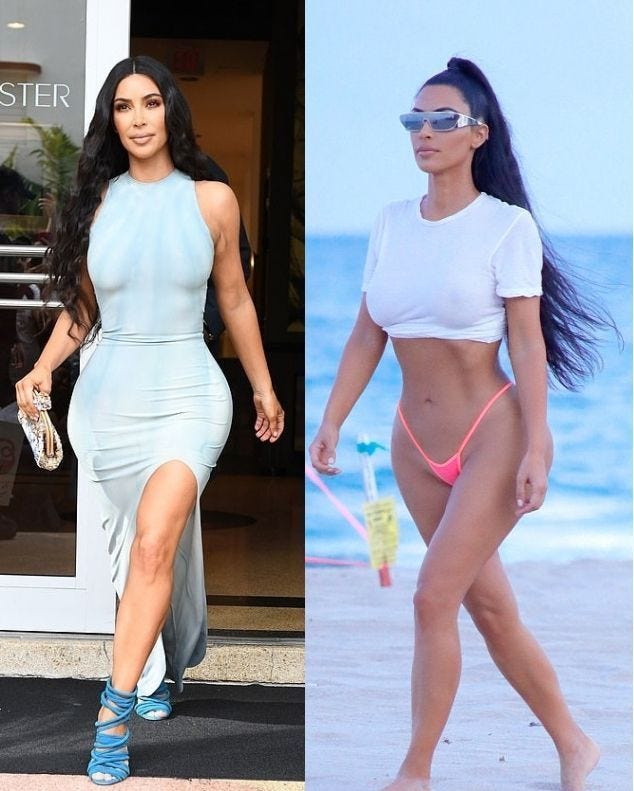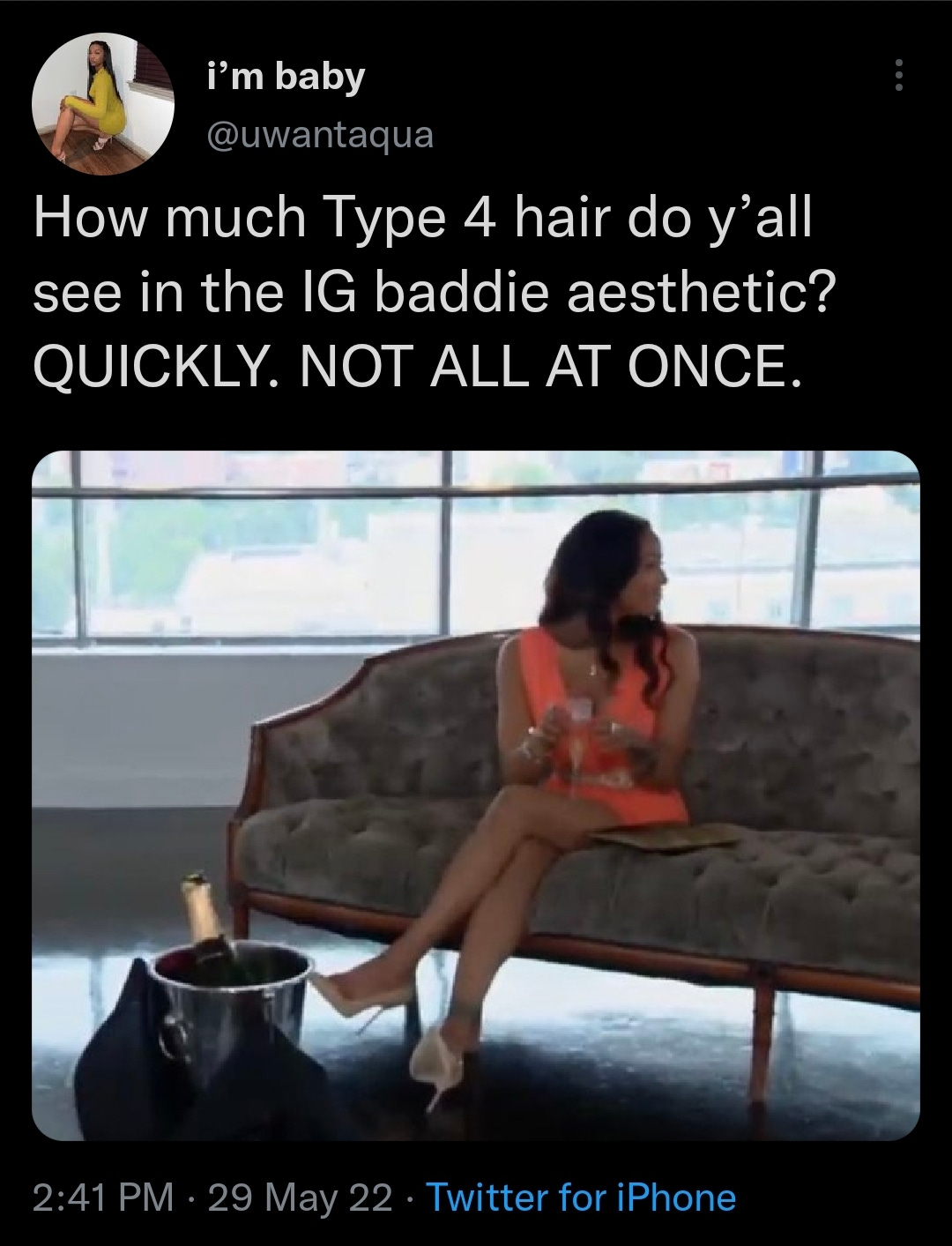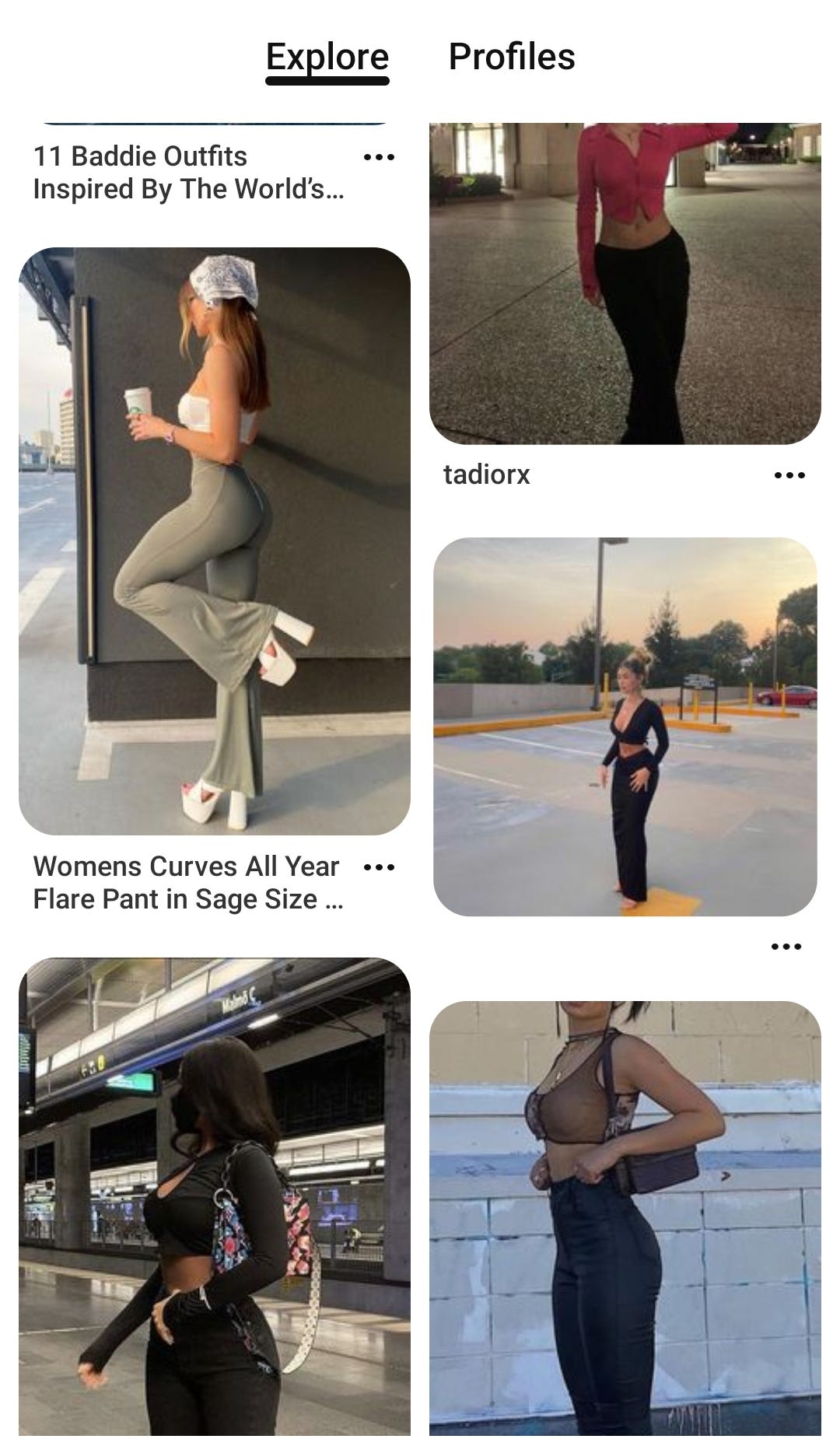Q: When you hear “IG baddie” what do you think of?
“Lots of pictures, popular on Instagram, nails, wigs, probably a BBL, probably have a gross attitude.”
Q: When you see them, are they typically black with natural hair?
“No.”
Before we get into it:
DISCLAIMER: I don’t hate the style of the aesthetic (when it’s not FashionNova or PrettyLittleThing). This aesthetic is heavily influenced by black culture and streetwear. If you follow this style, this does not necessarily mean I think you conform to the standards and underlying mentality that built the aesthetic.
Alright we know the origin of the so called “IG baddie”. For a quick recap, the original IG baddie in the early 2010's was surprise surprise, Kim Kardashian. After her infamous, yet controversial, “booty x-ray” on television and the rising popularity of Instagram, she became the reason for the earliest spark in interest in the Brazilian butt lift or BBL.
According to The Vox in “The BBL effect: How the Brazilian butt lift went mainstream”:
"The BBL aesthetic of the 2010's and the present day, however, is most often associated with the Instagram influencer, whose body exists to be consumed by the most people possible.”
Basically, she became marketable, gained more social power and therefore, she became the blueprint for the IG baddie.
But why was it so easy? And what’s the problem with the aesthetic?
Not only did she have a marketable body, but she had an “Instagramable” face; a “Mrs. Potatohead” face that stuck features that society loved on and tossed out the others it hated.
The New Yorker in “The Age of Instagram Face” says:
“The racial aspect of it (the Instagram Face) was as if the algorithmic tendency to flatten everything into a composite of greatest hits has resulted in a beauty ideal that favoured white women capable of manufacturing a look of rootless exoticism.”
“We’re talking an overly tanned skin tone, a South Asian influence with the brows and eye shape, an African-American influence with the lips, a Caucasian influence with the nose, a cheek structure that is predominantly Native American and Middle Eastern.”
Basically she cherry picked features from people of colour to make an “elevated form" of white woman, as if those are the only things noteworthy about these groups, and passed it off as the standard if anyone wants to become marketable online. The IG baddie became exclusionary.
And the girlies ate it up.
Apparently so did Pinterest because I had to scroll for miles before finding a black woman or POC under the search tag.
But back to what I was saying. To be an IG baddie you literally have to look a certain way. As I was thinking of this, this tweet popped up on my Twitter:
To answer that question: BARELY ANY in the handful of black women in the aesthetic. Why? As demonstrated earlier, too much blackness does not match the blueprint laid out by Miss Kimmy K. And the algorithms of all social media know and promote this.
“But Sola, I’m a black IG baddie with natural hair with a significant following so this isn’t true.” Then why are you one of few? Where are your counterparts? What are you doing to also push them into the algorithm? You could be comfortable where you are, but many others may not be experiencing the same success (if they are trying to). Two things can be true at once.
Now black women may feel the need to contort themselves to fit into that standard to enjoy the aesthetic; constantly getting new wigs because coiled hair doesn’t really fit the outfit and probably getting a secret BBL to have THE body, which promotes unattainable beauty standards that do not exist in nature to impressionable followers. And then this is a whole new problem because internalised anti-blackness (and a certain type of phobic) jumps in; making it more exclusionary.
So now you have the girls who made into into the algorithm using one or more of those tools so when another is actively trying without using them, gatekeeping of the aesthetic starts happening or they uphold those those standards and it gets passed on. And the cycle continues.
And that's why we keep needing to put “natural black girl” after every search.
Every aesthetic has its problems of course, but I found myself having an issue with this one the most because of its evolution and where it is right now. Some of the girlies are scamming and taking over retail nowadays but that’s a whole different story for another time.
AGAIN this really is not an attack on people who dress the aesthetic nor on people who have plastic surgery. It’s just criticizing the undertones of it that people aren’t noticing with the objective of reminding people that they don’t need to follow the blueprint to enjoy it and possibly market themselves.
That’s all from me for now. Tell me what you think (in a respectful way). I’ve made my STATEMENT, now tell me yours.
-Sola








